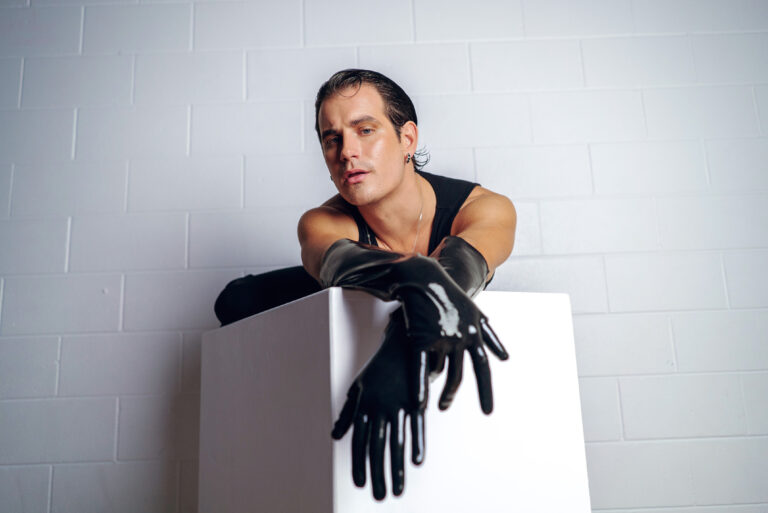Like many dance teachers, Sergey Kozadayev deals with pain from arthritis on a daily basis. Every morning, the 55-year-old wakes up with pain in his knees, a condition he attributes to several bad habits from his days as a professional dancer with the Leningrad State Ballet. Kozadayev recalls landing improperly from jumps—locking his knees instead of using them to absorb the shock and protect his hips and lower back. By dancing with poor technique, he caused irreparable damage to his ligaments and joints. “Now I have two nails in my kneecap, and when the rain is coming, I know,” jokes Kozadayev, who served as the ballet master at the Colorado Ballet in Denver before becoming the artistic director at Chicago’s Salt Creek Ballet.
Nearly 70 million Americans suffer from arthritis—that’s about one out of every four people—and more than 58 percent are women, according to the Centers for Disease Control. A deterioration of the cartilage between joints, which causes pain and decreased range of motion, arthritis normally affects people over the age of 60, but in dancers, it can occur as early as age 20, due to the constant strain on their bodies. If you suspect that you are suffering from arthritis, here are some tips for diagnosing the condition, dealing with the pain and getting through a long day of teaching.
Recognizing the Symptoms
Look out for joints that are red, warm, swollen and achy. “If you have all of those components, then you may have arthritis,” says Dr. Hayes Wilson, a national medical advisor for the Arthritis Foundation and chief of rheumatology at Piedmont Hospital in Atlanta, Georgia. Experts say if you experience any of these symptoms for more than a week, it’s best to consult a doctor.
Unfortunately, dancers have a tendency to push through their pain and put off seeking medical advice. Although you may have developed a high pain threshold, experts say you can’t ignore sore feet and tender muscles, and the longer you leave your arthritis unchecked and don’t change your behavior, the worse it can become. “The fear among dancers is if they have it checked out, [the doctor] will tell them they can’t dance,” says Donna Williams, the Dance Medicine Manager for AthletiCo, a physical therapy firm in Chicago. “But if you let it go, it’s going to become a big problem.”
Lessening the Pain
Once you are diagnosed with arthritis, there are steps you can take to make life easier. Wilson recommends that dance teachers start by taking an over-the-counter anti-inflammatory. If these over-the-counter medicines don’t work, your doctor can prescribe something stronger.
Next, learn when to take a break. “Pacing yourself during class and taking rest breaks is important,” Wilson says. Don’t be reluctant to sit on a stool to watch the class, rather than walking around and examining students.
Williams adds that you should sit down if you start to feel pain in your knees, ankles or feet. “If you’re having problems, sometimes it’s necessary to make modifications to prolong the life of your body,” she says. You should also avoid using the same muscles too often, which can be a common problem for dance teachers who lead the same exercises day after day. And don’t favor one side of your body when demonstrating steps, as that can cause added strain to certain joints. Instead, Williams suggests forcing yourself to demonstrate on both the left and the right sides as a form of muscle-balancing.
After 10 years of working with dancers from the Joffrey Ballet, Hubbard Street Dance Chicago and Alvin Ailey American Dance Theater, among others, Williams says she’s seen a lot of similarities in where dancers experience pain. According to her, overworking certain muscles and underusing others will cause unnatural strain on the connecting joints.
“[Dancers’] calves are so strong because they relevé and jump all the time,” she says. This imbalance can lead to arthritis in the ankles, knees and feet. Dancers also tend to have strong quadriceps but weak hamstrings and outer hips, which can cause pain in the hips and lower back. To combat these tendencies, Williams recommends exercising outside of the studio and varying your workouts to strengthen weaker muscles and evenly tone your body. Choose activities that won’t put added stress on your joints, such as yoga, Pilates, swimming or biking. In the gym, stick to low-impact cardio machines such as elliptical trainers and stationary bikes.
Maintaining a healthy, balanced diet is another key to lessening arthritis pain. Obesity is a major contributing cause to arthritis, because excess weight puts extra strain on the joints. Some experts also encourage arthritis sufferers to avoid foods that are acidic, such as caffeine, tomatoes, potatoes, peppers and eggplant, although there is no conclusive scientific evidence to prove these foods make arthritis worse.
Finally, the Arthritis Foundation stresses that you should be kind to your joints by applying an ice pack to those areas that are hot and inflamed, taking a warm or hot bath before going to bed and treating yourself to massages.
Considering Surgery
Many arthritis sufferers even opt for surgery. Dick Blake, a 62-year-old social dance teacher in Cleveland, Ohio, says he was in denial about the seriousness of his arthritis for eight years before he finally found himself walking with a cane and realized the condition was threatening his way of life. “It was devastating,” Blake says. “You have your business, hundreds of students waiting to take classes from you, and you can’t do it.”
He tried napping often and taking pills for the pain, but eventually he decided to have two hip replacements at the same time. Within six weeks, Blake says he was walking again and back in the studio, and 10 years after surgery he is still pleased with the results. “I can dance as well as I did 25 years ago, and it’s because of good surgery,” he says.
Blake recommends that dance teachers get evaluated for surgery by at least two doctors. “If you’re positive you have to have it done, the longer you wait, the worse it will be,” he adds. “The students will be there when you get back.”
Training for Prevention
“The first and most important thing I would say to dancers is to use proper technique to avoid injury,” says Wilson. To prevent arthritis from developing later on, young dancers should be especially sure to use correct turnout. If dancers aren’t rotating their legs completely from the hips, they will end up rolling forward on their toes, which puts added pressure on the knees and ankles.
To encourage correct turnout from an early age, Williams sends her team of therapists into performing arts high schools to analyze students’ dance technique. “We like to look at their biomechanics,” Williams says. “They may be cheating, turning out their foot and knee because they don’t have natural turnout at the hip.”
Incorrect form isn’t only found in young, inexperienced dancers. Williams says even some dance teachers don’t use proper form, and she notes that it’s even harder to correct their mistakes. “They’ve been doing this for so long that they might need to unlearn things,” she says.
In the end, it’s important to remember that pain from arthritis need not spell the end of your teaching career. With attention and care, you will find that you can continue to choreograph, demonstrate and teach every day. DT
Lauren Heist is a freelance writer in Evanston, IL.



